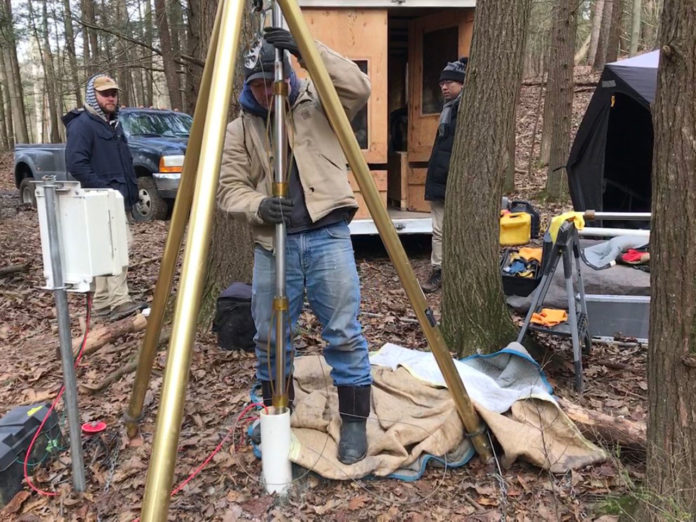Most of the countries get drinking water from groundwater. Hence, there is a need to protect this valuable resource. Although, it remains obscure where the water is or how it moves in the subsurface because it remains unknown what is down there.
Furthermore, chemical reactions take place deep below the ground, and it affects water quality. Methods to see such chemical reactions are time-consuming, expensive, and have limited scope.
In a new study, scientists from Penn State decided to look under the surface by using human-generated seismic waves — similar to the waves from earthquakes.
They found that seismic waves can help to identify these reactions under an entire watershed and protect groundwater resources.
Xin Gu, a postdoctoral scholar in EESI, said, “In this study, we had the advantage of having previously drilled boreholes, so we knew at which depths geochemical changes happen. We also had the materials from the boreholes, so we knew the mineral abundance and element composition. Here we tried to expand our knowledge by doing geophysics, which is relatively more efficient.”
Scientists logged — lowered instruments that can send and receive signals, or even take high-resolution images, down a borehole — a 115-foot deep borehole drilled into the valley floor at the NSF-funded Susquehanna Shale Hills Critical Zone Observatory, a forested research site in Penn State’s Stone Valley Forest that sits atop the Rose Hill shale formation.
They then used a seismic logging tool to map the subsurface. The logging tool sends out a seismic wave and records the wave’s velocity, or how quickly it moves, as it travels away from the tool.
Faster velocities indicated that the waves traveled through solid bedrock or where pores in weathered rock are filled with water. Slower velocities indicated the waves moved through weathered rock with air-filled pores or soil near the surface.
The examination group absorbed the data into a rock physics model that decided the composition change, porosity change, and saturation change of the stone to clarify the measured velocities.
They found that simple chemical reactions among water and clay caused small changes that the seismic waves could see.
These changes helped scientists determine where water opens up pores in the subsurface.
The study also reported that tiny gas bubbles in the groundwater are deep carbon dioxide produced by microbial respiration and mineral reactions in the subsurface.
There are two very reactive minerals commonly found in shale — pyrite and carbonate minerals. When pyrite interacts with water, it oxidizes and generates sulfuric acid. The acid can interact with carbonate, a base that neutralizes the acid but creates carbon dioxide in the process. This carbon dioxide can occupy pore space at specific depths, even under the water table.
The results of these studies were corroborated with data taken from the valley and ridge boreholes drilled and logged in 2006 and 2013. Scientists also compared the results to two-dimensional models showing how velocities change in the subsurface. The 2D models were created using seismic waves generated by striking an aluminum plate with a sledgehammer and recording the waves at many locations along the surface.
Gu said, “Geophysical imaging is a quite powerful tool. From the boreholes, we know how velocity changes with depth, from the lab measurements on the core materials we know what the mineralogy and the geochemistry changes are with depth, and by combining that knowledge with the 2D seismic models, we can infer how the mineralogy and geochemistry change across the watershed.”
Brantley said, “The carbon dioxide in the water does not pose a health risk. It is exciting the researchers could “see” it with seismic waves without having previously known it was down there.”
“These measurements and our ability to combine geochemical and geophysical observations will help us understand the landscape sculpted by water in the rocks beneath us.”
Other co-authors of the study include Andrew Nyblade, Lisa Ma, David Oakley, and Natalie Accardo, Penn State; Gary Mavko, Stanford University; and Bradley Carr, University of Wyoming.
Journal Reference:
- Xin Gu et al. Seismic refraction tracks porosity generation and possible CO2 production at depth under a headwater catchment. DOI: 10.1073/pnas.2003451117
